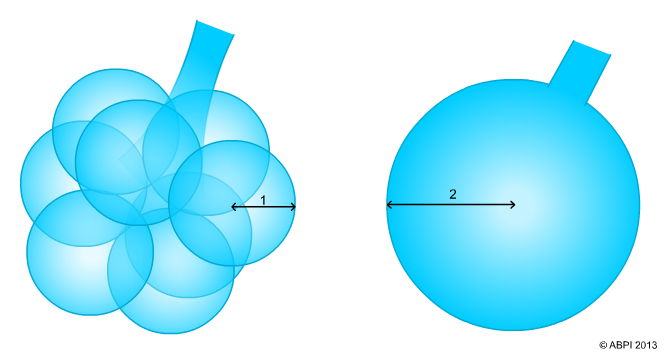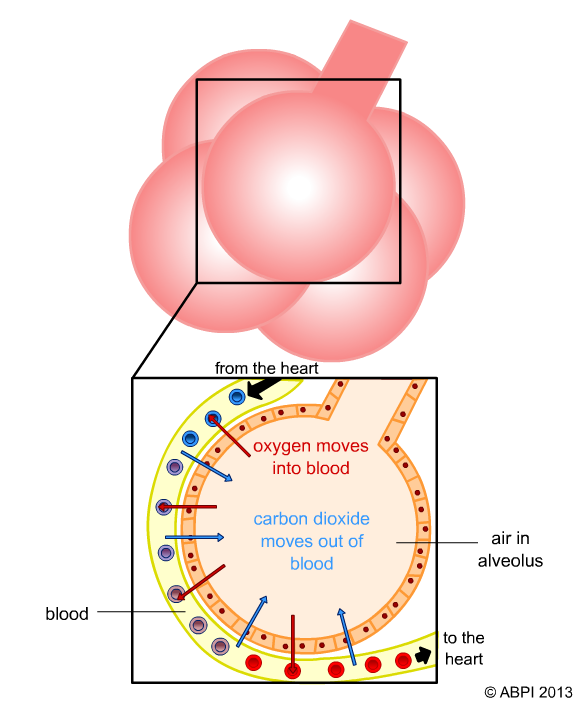This topic takes on average 55 minutes to read.
There are a number of interactive features in this resource:
 Human biology
Human biology
 Biology
Biology
 Physical education
Physical education
There are about 300 million alveoli in each of your lungs. These tiny air sacs provide an ideal site for the diffusion of gases into and out of the blood – also known as gaseous exchange.

These eight small spheres with radius 1 have the same total volume as the one larger sphere with radius 2 – but they have four times the total surface area
The alveoli have a very large surface area – in fact if all of the alveoli in your lungs were spread out flat they would cover the area of a tennis court. This large surface area is the result of all the alveoli being small spheres – it is another example of the importance of the surface area:volume ratio.
If your lungs were simply two large balloon-like structures, the surface area wouldn’t be big enough for you to get enough oxygen by diffusion to supply the needs of your cells. But each alveolus is a very tiny sphere. The smaller the radius of a sphere, the bigger the relative surface area – halving the radius increases the relative surface area by a factor of four. The millions of tiny alveoli in the human lungs are a very effective adaptation which provides a huge surface area for gaseous exchange into and out of the blood.

The external appearance of the alveoli
The alveoli have a good air supply from the bronchioles and a rich blood supply. This is vital for successful gaseous exchange because it maintains a steep concentration gradient for oxygen from the air in the alveoli to the blood, and for carbon dioxide from the blood to the alveoli.
Oxygen constantly diffuses into the blood from the alveoli, but the blood is immediately replaced with more deoxygenated blood, maintaining a steep concentration gradient. Similarly carbon dioxide diffuses down a concentration gradient from the blood into the alveoli. It is diluted in the volume of air in the lungs, and the concentration gradient is made even steeper when fresh air is breathed into the lungs. As a result gas exchange takes place in both directions rapidly and effectively along the steepest possible concentration gradient.
Within the alveoli the gases in the air and the gases dissolved in the blood are only separated by two layers of epithelial cells. This means the distance over which oxygen and carbon dioxide diffuse into and out of the blood from the alveoli is very small – about a thousandth of a millimetre or 1 micrometre (µm). This is another adaptation for rapid and effective diffusion.
 Gaseous exchange in an alveolus
Gaseous exchange in an alveolus